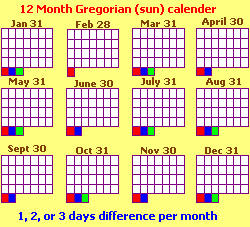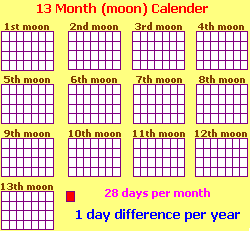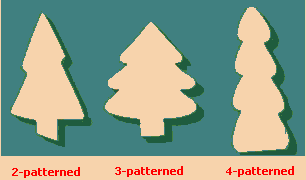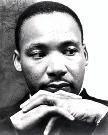page 5
(The Study of Threes)
http://threesology.org
| 1 | 2 | 3 | 4 | 5 | 6 |
| 7 | 8 | 9 | 10 | 11 | 12 |
| 13 | 14 | 15 | 16 | 17 | 18 |
| 19 | 20 | 21 | 22 | 23 |
3-patterned solar calendar versus 1-patterned moon calendar:
 |
 |
Notice that the first three numerical designations- 1st, 2nd, 3rd on the Moon calendar have different suffixes, (st, nd, rd) while every number thereafter uses the ending of th: 4th, 5th, 6th, etc...
Calendar information adapted from:
Three common Christmas tree limb patterns used for handmade decorations:

--- Miller Woodcraft ---
3-patterned southwestern Christmas tree variation:

--- Christmas Trees ---
3 recurring Black Plagues of Humanity:
- Problems with Black Peoples- Crime, diversity, racism, famine, war, sexual diseases, exploitation, scams, antiquated slavery issues, etc...
- Problems with (Black) oil- Deliberate spills, drilling impacts, pollution, wars, etc... (and in ancient times it was bogs, such as the bogs of Europe that people sometimes fell or were thrown in)
- Problems with Black ink (as opposed to red ink) corporate profits- Falsifying account documents, investment scandals, insider trading with government officials, etc...
3 types of fabricated sheet metal covers on many engines:
- Oil pan
- Valve covers
- Timing chain cover
1 barrel (bbl), 2 barrel, 4 barrel carburetors were typical on internal combustion engines, though there have been variations such as three two-barrel (colloquially called 3 deuces), multiple one-barrel carburetors attached separately for each cylinder, two four-barrel combinations, as well as experimental variations.
3 common ways of supercharging an engine:
- Turbo-charge (exhaust-driven).
- Blower-charge (typically belt-driven and are called superchargers).
- Nitrous oxide induction.
3 types of engine bearings commonly replaced when rebuilding an engine:
- Main- (crankshaft) bearings.
- Rod- (connecting rod) bearings.
- Cam- (camshaft) bearings.
3 typical oversize pistons used when boring engine cylinders:
- .030 (30 thousandths oversize)
- .040 (40 thousandths oversize)
- .060 (60 thousandths oversize)
3 common sizes of crankshaft journals encountered:
- Stock- as-is from manufacturer.
- .010 (10 thousandths) undersize due to machine shop grinding.
- .020 (20 thousandths) undersize due to machine shop grinding.
3 typical ways to purchase engine gaskets in the U.S.:
- Full (complete engine) gasket set.
- "Half" (head/top end or bottom end) gasket set.
- Individual gaskets.
3-lettered abbreviation used to designate an original part from a specific engine manufacturer: OEM (Original Engine Manufacturer)
3 feet are kept in contact with the ground while Asian elephants are running:
OGLE-TR-3, a third star found by German astronomers (04-24-03), is very similar to our Sun, with a temperature of about 5800 deg C (6100 K). The circumstance is explained as an exo-planet, somewhat larger than Jupiter, moving in front of its parent star.
GPS: The Global Positioning System locates latitude, longitude and altitude by using signals from a network of satellites in space.

3-patterned number reference joke:
A few days ago I was having some work done at my local car garage. A blonde came in and asked for a seven-hundred-ten (seven one-hundred ten). We all looked at each other and another customer asked, "What is a seven-hundred-ten?" She replied, "You know, the little piece in the middle of the engine, I have lost it and need a new one." She replied that she did not know exactly what it was, but this piece had always been there. The mechanic gave her a piece of paper and a pen and asked her to draw what the piece looked like. She drew a sort of squiggly circle and in the middle of it wrote 710. He then took her over to another car which had its hood up and asked "is there a 710 on this car?" She pointed and said, "Of course, it's right there." (The image illustrates what she was pointing to. You need only to visually rotate the image to appreciate the humor. Mechanically minded men generally find it humorous, while some women interpret it to be a serious explanation of the missing part.)
3 to 1 ratio of reasons for the imprisonment of Japanese Americans in "Concentration Camps" during WWII:
The entire fiasco was motivated by---
- 1 of 3: War time hysteria.
- 2 of 3: Racial bigotry.
- 3 of 3: Opportunistic businesses wanted to take property left behind by evacuees.
- 1 of 1:
Counter claims have suggested that there was complete documented evidence to justify an evacuation of Japanese-Americans and Japanese nationals from the West coast of the United States. In other words, it was a form of distraction to conceal illegal activities of the U.S. Government such as having prior knowledge of the Pearl Harbor attack and doing nothing about it for various ulterior related-to-business and political motives. American history portrayed in history books and various other forms of social media quite often disperse falsifications, lies, distortions and proportioned-truths. However, some critics would point out such is the case thought for all governments and religions throughout history. Peoples throughout the world live in varying forms of "socialized" fantasy.
Note: the word "evacuation" and the notion of taking advantage of another's property in their absence is also used by "opportunistic" businesses, individuals, governments, religions, etc., in various ways such as:
- When a person is fired from a job after they have used personal property as collateral
- (I know of someone who purchased a car by placing a piece of their land as collateral for a down payment. The Bank officers encouraged (colluded with) the person's employer to lay them off so that they could sell the land and make a huge profit that they shared with the business owner.)
- When a person is sent to prison or jail.
- When a person is burned at the stake (gaining someone's personal property was sometimes the motive for a person being accused by another of practicing witchcraft).
- When a person is manipulated by being drugged with drugs, alcohol, religion, intimidation, brow beating, etc.,
3 Black Americans cited for deliberate public malfeasance in their writing efforts:
 Martin Luther King Jr. is said to have plagiarized, and fabricated material to suit his pursuit of civil rights for American Blacks in the 1950's/1960s. |
 Janet Cooke was a journalist with the Washington Post who fabricated the story of a non-existent eight-year-old heroin addict, called "Jimmy's World," in order to win the Pulitzer prize in 1981. |
 Jayson Blair was a journalist for the New York Times who falsified personal accountability, plagiarized, and fabricated material to write news stories. (2003) |
Three specific attributes of Martin Luther King Jr. at age 35 regarding the Nobel Peace Prize:
- Youngest man.
- Second American.
- Third black.
Approximately three times the 1975 shopping cart's capacity is the modern day form.
One reason offered for the larger basket size is said to be: The early small basket(s) form were redesigned as a means to influence consumers to purchase more by shaming consumers (who might think they will be viewed by other customers as being poor and unable to keep up with the 'Joneses').
Having worked in a grocery store in my youth, I recall the early as well as later-styled carts. The larger carts were purchased not only to try to encourage people to buy more by being able to shop longer because the basket did not fill up as fast, but as a means to assist customers (and box/bag boys) in carrying several boxes/bags of groceries to their vehicle, whereas before, more than one trip might have to be made.
In some parts of the U.S., a person might be referred to as a bag/sack boy because merchandise was placed into a burlap (or gunny) bag that was sometimes interchangeably called a sack. No less, some people would use old flour bags/sacks to put their merchandise in which was easier to carry by flinging it over a shoulder as they walked home. As manufacturers switched from shipping merchandise in wooden crates, barrels, and burlap bags, to using cardboard boxes, the unused boxes began to pile up and create a problem for store owners/managers in trying to figure out what to do with them. The problem was solved in the usage of boxes to place merchandise in, which eventually resulted in young grocery clerks being affectionately referred to as a "box boy."
I can still recall being advised by a store manager that I needed to ask a customer whether they would like their goods placed in a bag, box, or their own sack. (The sack might at times be attached to a two-wheeled upright wire cart that they would pull behind them.) On more than one occasion I was so busy that I forgot to ask and had to unpack goods from a bag to be placed into a box because the customer insisted on having boxes, or they watched and waited till I had finished bagging their groceries before telling me they brought their own sack. (I was so fast at boxing and bagging groceries that most customers stood by as if watching a TV program. Some had to look inside a bag or box to ensure that I wasn't just throwing the items in on top of one another. They couldn't believe someone could sack groceries so fast and keep the items straight.)
As stores grew larger in order to accommodate the increased amount of merchandise being placed onto shelves, there arose the problem of where to store the boxes. The problem got worse when more and more customers began to prefer paper bags, so we began throwing more and more boxes away until such time that we began to save them (by breaking them down into a flat position) and placing them into a container for recycling, which was eventually done by a box crushing machine which did the work for us.
At first, using paper bags was a boon because they were easier to store and carry. This changed when paper bags began being offered in small, medium, and larger sizes, along with freezer bags for frozen goods, and then deli bags for hot goods, bags for candy, bags for liquor bottles, bags for coffee, bags with/without handles, lightweight bags, heavyweight bags, etc... I recall spending several hours just filling up all the different places that were built into checkstands to hold bags! It in fact became such a chore, a store clerk would be alternately assigned to do just this task on a given day of arriving at work, without having to do any other duty.
Over time, the predominant usage of paper bags provided us grocery clerks with the moniker of "bag boys." Eventually, as is a common occurrence amongst boys in almost anything they do, there came a time when sacking groceries was looked upon as a sort of sport and bag boys began to boast of how fast they could sack groceries. No less, it was not too uncommon for some bag boys to (silently or otherwise) compete against cashiers who prided themselves for being faster at ringing items up, and would deliberately ring up those items which were intended to slow the "bagger" down in order to break their rhythm and make the sacker unprepared to handle an on-rushing volume of goods that could be more quickly rung up by the cashier with confidence. Nowadays, in this era of plastic bags, the speed of bagging grocery items is at a snails pace compared to the 'glory' days of paper bagging competition.
3 leading technologies that produce a tried and true tested grocery cart wheel:
- No More
Shake, Rattle and Roll-
New high-tech tub ball bearing is insert molded into the high impact polypropylene hub of the Sof-Runner (brand) wheel. This completely eliminates wheel shake. - Cast Polyurethane: Smoothness & Durability-
Sof-Runner has reinvented the wheel with a tough new tire molded from cast polyurethane - known for its resilience and wear resistance. - Completely Redesigned Wheel Hub-
Sof-Runner's wheel hub has been redesigned with a curved slope to give improved side impact thrusts - a common problem with conventional wheels.
Triple ribbed reinforced grocery basket rims used by SPECTRUMTM Shopping Carts.
3 individual signs arranged next to each other seen in a Post Office: Weigh it- Stamp it- Mail it.
Three metres a year is the approximate amount that Water tables are falling across much of the developing world, according to a study by the UN Environment Programme (Unep). (June 2003)
Three types (or groups) of people inhabited the Caribbean before the arrival of Christopher Columbus in 1492;
- The Ciboney or Guanahuatebey.
- The Taino or Arawak.
- The Caribs.
The cultural distinctions among the three groups are not great; the single greatest differentiating factor appears to be their respective dates of arrival in the region.
3 general statements concerning what chemical equations show:
- The reactants which enter into a reaction.
- The products which are formed by the reaction.
- The amounts of each substance used and each substance produced.
3 failures of the (justice) system outlined by Texas Defense attorney Jeff Blackburn in the arrests of (and convictions of some of the) 46 alleged drug dealers in a July 23, 1999, a high-profile drug sweep in Tulia, Texas rounded up. All but seven of those arrested that day were African-Americans; 10 percent of the black population of this town of about 5,000 between Lubbock and Amarillo.:
"What we've got here is a complete system breakdown," he said.
- A breakdown of the defense function.
- A breakdown of the prosecution function.
- And a breakdown of the whole judicial system.
(This is a 3:1 ratio if we include the initial summarizing statement.)
The individuals were imprisoned on the word of undercover officer Tom Coleman.
Coleman, who is white, spent a year-and-a-half building drug cases against the suspects. He was named 1999's "Outstanding Lawman of the Year" by the Texas Narcotic Control Program.
At the trials, Coleman presented little evidence; few notes, no surveillance video or wiretaps. According to Associated Press reports, no drugs were ever found. Coleman was indicted in April (2003) on three counts of aggravated perjury stemming from his testimony in the drug hearings, according to the AP.
Period 3 gene is said to be linked to a person's preference for mornings or evenings, has been discovered by Researchers at the University of Surrey. (17 June 2003) This gene is one of those involved in regulating the body's internal clock. People with an extreme preference for early mornings are more likely to have a long version of Period 3. In contrast, those with an extreme preference for evenings are more likely to have the shorter version.
(The study is published in Sleep, the journal of the American Academy of Sleep Medicine and the Sleep Research Society.)
Three days in length, the Japanese Bon festival is dedicated to the spirits of ancestors, for whom special foods are prepared. It occurs during the middle of the summer (one of the most important festive periods of the year). It is said to be reminiscent of the American Thanksgiving.
Three greatest problems facing internet users today (2003): Spam, Viruses, and Spyware.
Three main classes of asteroids based on their compositions:
- S-types- The S-types, for "stony", are made-up of Silicate materials and are brighter in appearance (higher albedos, roughly 15 percent).
- C-types- The C-types are mainly composed of Carbon and have relatively low albedos (2 to 5 percent).
- M-types- The M-types are "metallic" and fall between the S and C types in terms of brightness with
albedos of about 10 percent.
The C and S-type asteroids are the most common; only 5 percent of the total number of asteroids are M-types.
3 "modern" aviators credited with "first flight" experimentation:
- Orville Wright- American
- Wilbur Wright- American
- Sir George Cayley- British
Three generations (12 entries on the Brumley family tree) were killed when their plane slammed into Mount Kenya. The Atlanta, Georgia Philanthropist Dr. George Brumley Jr. along with family members and relatives died on Saturday, 07-12-03.
Information from a 07-21-03 New York Times article written by Jeffery Gettleman.
Three Seductive Ideas, book by Jerome Kagan. Harvard University Press, Cambridge, Massachusetts, 2000. ISBN 0-674-89033-7. 232 pp., Paperback, $14.95:
- The universal appeal of psychological processes.
- "Infant determinism."
- The "pleasure principle" as the origin of moral behavior.
His conclusions are:
- That many psychological processes do not generalize broadly.
- That most adaptive adult characteristics are not determined by experiences of the first two years.
- That the majority of our daily decisions are issued in the service of gaining or maintaining a feeling of virtue and nor in gaining or maintaining pleasure.
3 U.S. businesses that refuse to withhold employees taxes are sued by the U.S. Government:
- The first case was against Al Thompson, owner of Cencal Aviation in Lake Shasta, Calif., a maker of flight bags and other accessories for pilots. Mr. Thompson told his 25 employees in September 2000 that no law required payment of taxes, and he has asserted that the federal government has no authority over his business.& Mr. Thompson should have withheld $429,400 from paychecks since July 2000, according to court papers.
- The second case, also filed in Sacramento, was brought against James O. and Sandra L. Molen, owners of Touch of Class Florist in Chico, Calif. The Molens
sought a refund of all taxes withheld from 1997 through 1999. The Internal Revenue Service sent them a check for $30,698 in error, the Justice Department said.
That refund plus taxes that should have been withheld since 1999 total $110,927, according to court papers.
"They can take a hike," Mr. Molen said. "I do not intend to abide by any command of me, flesh and blood, to do anything."
Mr. Molen is part of a movement that contends that court actions in which names are typed in all capital letters, as the case filed yesterday was, are not valid.
- The third injunction, filed in Federal District Court in Denver, was sought against Richard D. Rudd Sr.; his wife, Dolores; their children and their spouses; and their company, Colorado Mufflers Unlimited, also known as Exhaust Pros, in the Denver suburb of Northglenn. They owe more than $210,000 for taxes not withheld from paychecks of the company's nine employees, according to court papers. In addition, the I.R.S. erroneously refunded $88,768 that had been withheld from employees of the muffler business in 1997 and 1998. In May, a federal judge ordered the Rudds to return the money to the I.R.S., according to court records.
Information from a 07-22-03 New York Times article by David Kay Johnston.
Updated Posting: Saturday, 17-June-2007... 4:26 PM
Latest Update: Friday, 1st November 2019... 1:49 PM
Herb O. Buckland
herbobuckland@hotmail.com